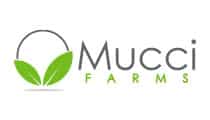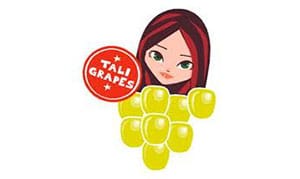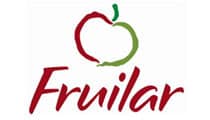How to Enhance Fruit Quality Control for Kiwis
We’re putting kiwi fruit under the spotlight! To improve kiwi fruit quality control we need to understand a bit more about how this fruit grows and what makes a kiwi crop thrive. Known as the most nutrient-dense fruit with high levels of vitamin C content, it’s no surprise that more than four million tonnes of kiwi fruit is produced each year!
Kiwi fruits originate in China and the country is still responsible for a large percentage of kiwi production today. There are a number of health benefits to eating kiwis, including decreasing blood pressure and increasing dietary fiber. Kiwi fruit has also been known to reduce the risk of heart disease as a result of being a good source of vitamin C as well as other vitamins and minerals, and of course its impact on blood pressure.
When you think about fruit quality control of the kiwi, whether you’re talking about exotic forms of the fruit such as the golden kiwi, or the regular fruit with its recognizable green flesh and black seeds, there is a lot to keep in mind. From farmers and growers, through to wholesalers, marketing companies and retailers – ensuring quality control is at the best possible standard with Clarifruit’s platform is a win for everyone.
Common Defects when Growing and Harvesting Kiwis
The following defects are the ones that are most likely to affect kiwi quality across the supply chain:
Bacterial Leaf Spot
Spread via pollen, wind and rain, bacterial leaf spot may begin as tiny black spots or marks and then spread across leaves very quickly. Many people report the signs of a “halo” around the spots, and when the disease has advanced heavily, a rust-coloured gummy substance appears.
Bleeding Canker
Look out for this defect in early spring when the leaves will wilt and the cankers will form on the branches, canes, cordons or trunks of the tree. As sometimes a tree manages to regrow later in the season, you might spot the typical red “bleeding” that gives this defect its name.
Blossom Blight
This is another name for bacterial leaf spot. This kind of defect can also be spread manually by people, machinery or animals - quickly spreading across a field or a shipment.
Botrytis Fruit Rot
This is a serious decay that can cause the loss of an entire crop. Early signs will be gray mold on the stem end of the fruit that looks shrunken in size. This mold can withstand low temperatures so in storage it can still spread across a shipment.
Boxelder Bug
In vineyards near the coast, boxelder bugs can be a problem for kiwi produce. They can cause the fruit, buds and leaves to be deformed. If you see the adult bugs, this is the best time to attempt treatment using bloom time spray during the early spring months.
Fungal Leaf Spot
The fungus that causes fungal leaf spot can stay alive for many years below the ground, making it tough to notice until it’s too late. When a kiwi fruit crop is damaged by fungal leaf spot, which is usually after a rainy season, you’ll see dark discoloration on the leaves and the vines themselves may even collapse entirely.
Leafrollers
There are many kinds of leafroller caterpillars that can negatively impact fruit by feeding on the leaves and causing scarring. Some, like the fruittreeleafroller have just one generation each year, while others like the orange tortrix can reoccur up to four times. Caterpillars can be green, brown, tan or yellow.
Nematodes
Nematodes are roundworms and when you have a large infestation, they can work at the roots and cause weakness and decay. As no rootstocks are resistant to nematodes in the kiwi growing process, it’s best to ensure you irrigate well before planting and also perform other preemptive measures.
Rhizoctonia Stem Rot
If you notice that high winds are causing plants to snap off entirely, you may have spotted the signs of rhizoctonia stem rot. This is from the rot that is making its way through the base of the plant. You can also visualize a red or brown root rot which can be seen right at the bottom of the stem itself. Look out for this defect during the rainy season, especially in areas with high humidity.
Root /Collar/Crown Rot
This kind of rot will result in the shoots not growing to their expected size, and you may also see that the leaves are smaller and chlorotic. You might not notice this in season one as often the vines show decline over several years. To check for this rot, cut the root in two and look for red or brown discoloration. You might find this worsens at room temperature, as 10-20 degrees is favorable for the rot to progress.
Sclerotinoa Rot
Unlike the gray or red molds and growth we’ve discussed above, if kiwi fruit are infected with this kind of rot, you will see white, often fluffy mold on the fruit. Inside the cottony mold, you will eventually see black spores as well. It can be spread from other plants.
Storage Rot
In wet conditions, you might see the signs of storage rot in your Kiwi yield. Shriveled fruit are easy to spot, but remember that this can quickly spread across a whole shipment if they are not removed. On the outside, gray fungus can be seen especially at the end with the stem, and inside, the flesh of the kiwi fruit will appear to be darker and water soaked.
Interesting Facts about Kiwis
- The kiwi fruit was originally called the chinese gooseberry! It was renamed in 1959 by Turners and Growers, who imported the fruit from New Zealand.
- The majority of kiwi fruit is produced in Chile , New Zealand and Italy
- Despite many people thinking of the characteristic hairy skin of a kiwi, there are hairless varieties of kiwi available too!
- Although usually associated with grapes - kiwi fruit actually grows on vines.
- Kiwi fruit has ten times more vitamin C than the equivalent sized/weighted lemon.
Common Quality Attributes for Growing and Harvesting Kiwis
The following internal and external kiwi attributes are commonly used for quality evaluation:
Diameter
Sugar
Firmness
Dry weight
Color
For the full list of attributes that the Clarifruit platform currently evaluates and recommended quality standards for each, download our free app now.
The Clarifruit platform also integrates with 3rd-party technology to evaluate external tomato attributes. Learn more here.















